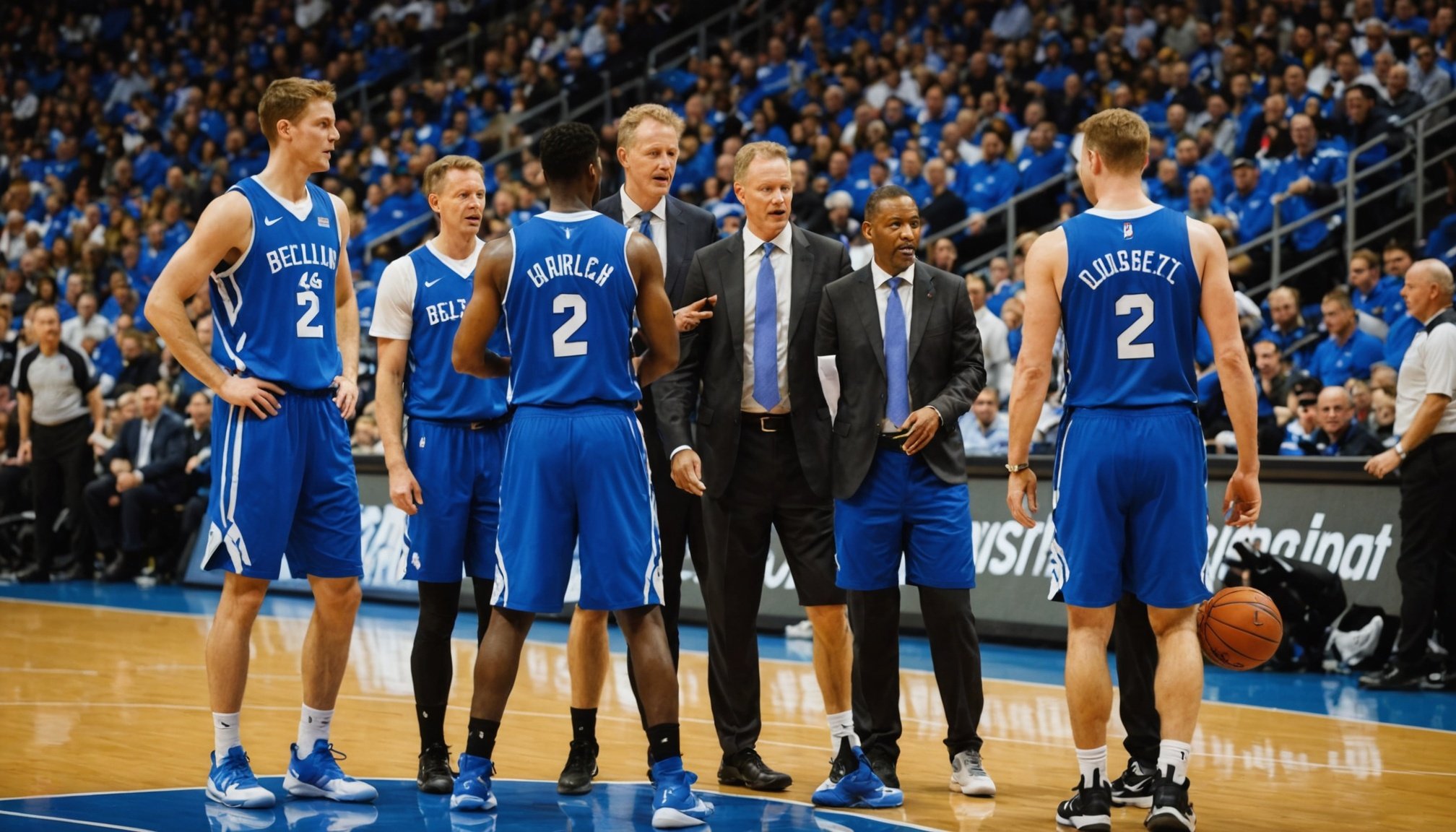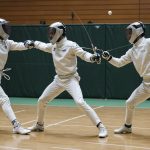Understanding Half-Time Dynamics
During half-time, successful basketball coaching hinges on implementing strategic half-time strategies that significantly influence team performance. A crucial aspect is the psychological readiness of players, which can be maintained by fostering a state of calm focus. Coaches should prioritize evaluating the team’s performance data to inform tactical adjustments, ensuring changes are data-driven and precise.
Creating a positive atmosphere during this break is essential for boosting player morale. Positive reinforcement and highlighting areas of success can enhance overall team performance and motivation. This can be achieved through encouraging words, recognition of achievements, and setting forward-looking goals. Providing a balanced and fact-based evaluation of the game thus far allows players to feel prepared and motivated for the second half.
Also to discover : Global talent recruitment for uk basketball academies: innovative approaches to unlock international potential
In-depth analysis of performance data aids in identifying which half-time strategies to implement. Coaches must evaluate both on-court actions and the psychological condition of their players. Highlighting specific areas for improvement using statistical evidence, while reinforcing the strengths shown during the first half, ensures that adjustments made are both relevant and effective.
Building an environment conducive to positivity and readiness impacts team performance significantly, setting the stage for a successful continuation of the game after the half-time interval.
Also to discover : Essential training tactics for uk basketball athletes: maximize performance ahead of major tournaments
Effective Communication Techniques
To optimise communication in sports, particularly in basketball, both coaches and players benefit from enhanced coach-player interaction and a solid understanding of team dynamics. Effective communication is integral for transmitting strategies and boosting overall performance.
Establishing Clear Objectives
Setting explicit, measurable goals helps ensure everyone on the team understands the task at hand. Communicating these objectives with clarity maximises focus and drives action. This method not only aligns individual roles with team goals but also clarifies in-game expectations.
Encouraging Open Dialogue
Fostering a culture where players feel comfortable sharing thoughts spurs better coach-player interaction. Players’ insights often lead to innovative strategies and fortify trust within the team. Every interaction should aim to be a two-way conversation, promoting a responsive rather than directive communication style.
Utilizing Visual Aids
Visual aids like diagrams or stats can significantly enhance communication in sports. They provide clear, concise representations of tactics, making strategies easier to digest during high-stress moments. This approach ensures all players are aligned with the game plan, bolstering team dynamics and facilitating swift adaptation to game-flow changes. By mastering these communication techniques, teams can effectively utilise the break to reinforce strengths and address weaknesses.
Motivational Techniques During Half-Time
Boosting team inspiration during the half-time break is pivotal for navigating the challenges of basketball games. Focusing on mental toughness, coaches utilise various motivation strategies to ignite a spark in their players.
Utilizing Motivational Speech
Crafting a compelling narrative lets coaches tap into players’ emotions and rekindle their commitment to team objectives. Engaging speeches that emphasise resilience and unity can energise players. Highlighting past successes or recounting gripping game scenarios builds confidence and determination, making players eager to take on the second half.
Setting Short-Term Goals
Targeting manageable, short-term goals reinforces focus. By breaking daunting tasks into smaller, achievable segments, players can maintain clarity and momentum. This approach ensures that individual efforts contribute meaningfully to the game’s strategic framework, providing a roadmap that players can rally around.
Recognizing Individual Contributions
Acknowledge each player’s unique impact on the game enhances morale. Simple acts of recognising individual contributions foster a sense of value and ignite team inspiration. This method cultivates an environment where players feel appreciated and inspired to push boundaries, ensuring team success as a collective effort. The power of acknowledgment not only uplifts morale but also strengthens team bonds, driving collective success.
Tactical Adjustments for Teams
Tactical changes during the half-time break significantly impact the overall game strategy. Recognising opportunities for situational plays based on opponent analysis is crucial. This process involves reviewing opponents’ weaknesses and crafting specific plays that exploit these areas. By tailoring the approach to the dynamics on the court, teams optimise their effectiveness in countering adversaries.
Adjustments to both defensive and offensive strategies are pivotal in responding to the unfolding match. For instance, switching from a man-to-man defence to a zone defence may be necessary based on the opponent’s play style. Additionally, redefining offensive roles to improve scoring opportunities ensures that the team remains adaptive and unpredictable.
Emphasizing key areas of improvement identified through performance data further guides effective tactical shifts. By focusing on what needs enhancement—be it rebounding, passing accuracy, or shot selection—coaches direct players’ energy effectively. This targeted approach ensures that adjustments are practical and grounded in an understanding of the team’s strengths and shortcomings.
In conclusion, tactical adjustments require a thoughtful balance of understanding opponent tendencies and refining one’s own team strategy. Effective basketball coaching during half-time leverages data and adaptability to enhance performance and increase the likelihood of a favourable outcome.
Incorporating Physical Drills
Incorporating basketball drills at half-time can refine a team’s performance by focusing on skill enhancement and tactical execution. Implementing drills that involve all players ensures the entire team remains engaged, encouraging a cohesive effort to improve game-play elements.
Quick Drills
Conducting quick drills that concentrate on specific skills can make a significant impact during this interval. These drills should target areas such as shooting accuracy, passing precision, or defensive positioning. By practising these key components under time pressure, players can develop sharper focus and rapid adaptability, crucial traits for responding to live game demands.
Skill Execution Focus
Focusing on skill execution during half-time maximises the efficiency of the practice session. Coaches should identify critical skills needing refinement, guiding players with precision. This strategy enables athletes to hone techniques that directly translate to on-court performance, thereby nurturing immediate results.
Encouraging Player-Led Warm-Ups
Player-led warm-ups present a unique opportunity for fostering leadership within the team. By allowing players to initiate and lead certain drills, individuals develop confidence and ownership over team development. This approach not only enhances leadership qualities but also promotes a collaborative team environment where each player’s voice is heard, further driving skill enhancement efforts.
Case Studies and Expert Opinions
Analysing coaching case studies provides invaluable insights into effective half-time adjustments that have made significant team performance impacts. Examining distinct matches reveals the rationale behind tactical shifts and the resulting outcomes. In one notable example, a UK basketball team successfully turned the game during half-time by adopting a zone defence to counter the opponent’s offensive strength, illustrating the importance of a flexible strategy.
Interview Insights from Experienced Coaches
Discussions with seasoned coaches offer real-world strategies refined through experience. Veteran coaches highlight the necessity of aligning half-time strategies with players’ psychological states and game flow. For instance, one expert underscores the significance of conveying precise role adaptations and leveraging player insights, reinforcing the contribution of effective coach-player interaction to game strategy.
Lessons Learned from UK Basketball Teams
Examining UK basketball team successes highlights recurring patterns in tactical changes and motivation strategies. Emphasis on adaptability and readiness to recalibrate based on real-time data is a common thread. Coaches also focus on nurturing mental toughness, enabling players to approach the second half with renewed vigour. Such lessons depict how strategic adjustments and motivational interventions during half-time can drastically influence game outcomes and overall team unity.











